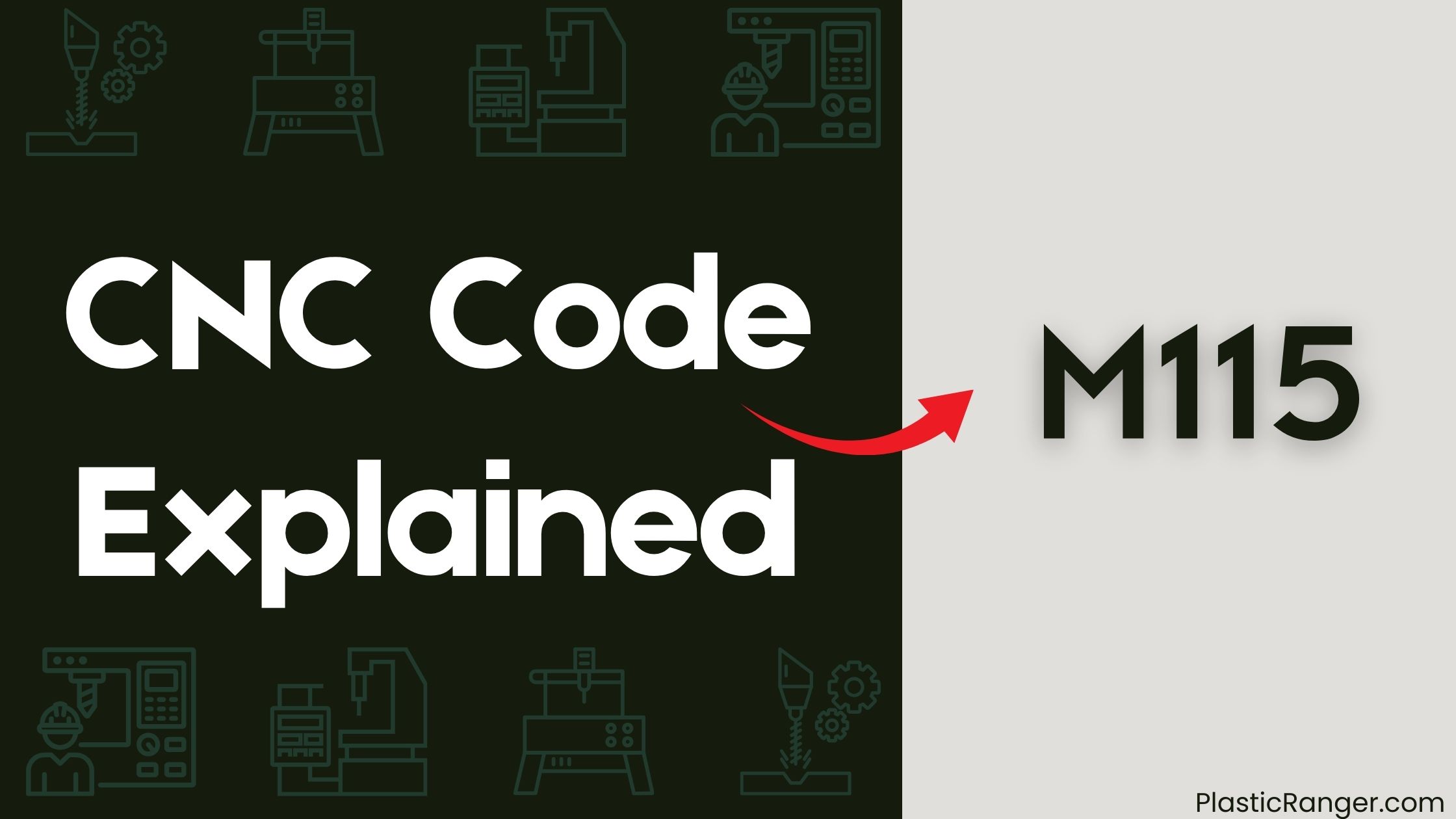Welcome to our simple guide on the M115 CNC code. Whether you are new to CNC programming or an experienced machinist, understanding the M115 code is essential.
This guide will explain everything you need to know about this unit mode command—what it is, when to use it, and why it matters.
(Step-by-step.)

Key Takeaways
- M115 is a machine builder-defined code, requiring consultation of machine builder’s documentation for understanding its function and usage.
- Its function is specific to the machine builder and not part of standard Fanuc CNC programming or online resources.
- M115 is used in conjunction with other codes, such as G0, G20, and G40, to execute specific instructions in machine-specific programming.
- It plays a critical role in custom probing cycles, requiring a bounding position to guarantee accurate movement and prevent probe breakage.
- M115 can be used interchangeably with M116 when bounding positions are provided, but G90/G91 state affects positioning moves.
Custom Machine Builder Codes
When building a custom machine, you’ll often encounter situations where off-the-shelf CNC codes won’t cut it.
As a custom machine builder, you need to create tailored codes that cater to your machine’s unique requirements. This is where custom machine builder codes come into play.
These codes allow you to define specific machine functions, such as tool change sequences, to guarantee smooth operation. You can create custom codes to control tool changers, spindle orientation, and other machine-specific functions.
M110 and M115 Code Functions
In the domain of custom machine building, M110 and M115 codes stand out as essential components in tailored CNC programs.
As a machine builder-defined code, their functions and usage are specific to the builder and require consultation of their documentation. You won’t find these codes online, and their meaning is unknown without the builder’s documentation, highlighting the importance of consulting the documentation for custom codes.
These codes are used in a specific program with other codes, such as G0 and M8, and are part of a larger program for turning that includes various instructions.
To understand the codes’ purpose and application, you may need to consult the machine builder’s support, as online resources may not provide information on these custom codes like M115.
Machine Specific Programming
You’re now moving into the domain of machine-specific programming, where custom codes like M110 and M115 take center stage.
These codes are unique to the machine builder and aren’t part of the standard Fanuc CNC programming language. As a result, you’ll need to consult the machine builder’s documentation to understand their function and proper usage.
You may even need the machine builder’s support to grasp their purpose and application. In a program, you’ll use M110 and M115 codes in conjunction with other codes, such as G0, G20, and G40, to execute specific instructions for turning and other manufacturing processes.
You’ll also incorporate other M codes, like M8, M9, and M1, which have different functions within the machine-specific programming.
Non-Standard G-Code Commands
As you plunge into machine-specific programming, you’ll encounter non-standard G-code commands that branch off from the standard Fanuc programming language.
These commands, like M115, are machine builder-defined and aren’t part of the standard Fanuc repertoire. Their function and proper usage can be found in the machine builder’s documentation, as they’re custom-made for specific machines.
You won’t find them in online resources due to their unique nature. To understand their purpose and application, you may need to consult the machine builder’s support.
In a program, M115 is used with other codes, such as G0, G20, and G40, to execute specific instructions. Other M codes, like M8, M9, and M1, are also used, highlighting the custom nature of these non-standard G-code commands.
CNC Macro Programming Tips
When developing CNC macro programs, it’s essential to understand the nuances of machine-specific codes like M115 and M116, which play a critical role in custom probing cycles.
You need to specify a bounding position when using these codes to guarantee accurate movement and prevent probe breakage. Be mindful of the G90/G91 state, as it determines whether positions are absolute or incremental distances.
When you’re not expecting probe contact, use M125 or M126 codes for positioning moves. Remember, M115 and M116 can be used interchangeably when bounding positions are provided.
CNC Codes Similar to M115
| Code | Function |
|---|---|
| M116 | 5th-axis rotary table CCW |
| M125 | Probing movement without expected contact |
| M126 | Probing movement without expected contact |
| M15 | 4th-axis rotary index table CW |
| M16 | 4th-axis rotary index table CCW |
| M331 | 6th rotary axis CW |
| M332 | 6th rotary axis CCW |
| M105 | Axis movement until switch state change |
| M106 | Axis movement until switch state change |
| M17 | Indexing head index CCW |
| M94 | Attachment indexing by forward rotation |
| M95 | Attachment indexing by reverse rotation |
Quick Navigation
